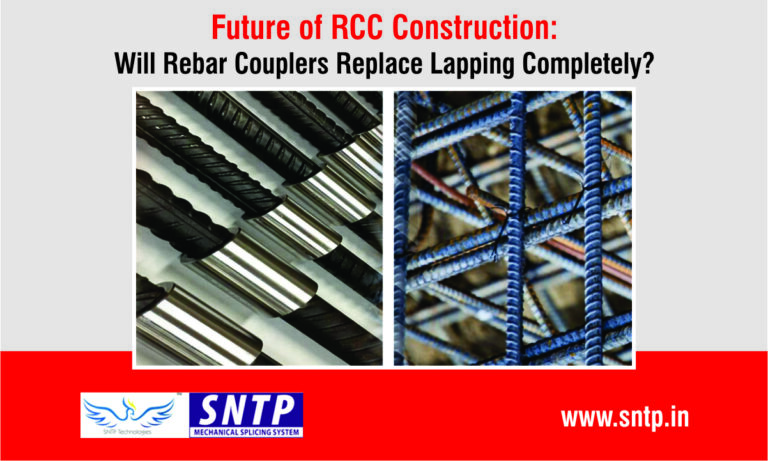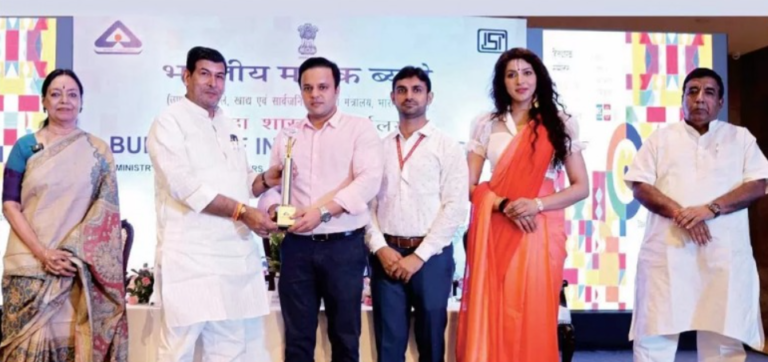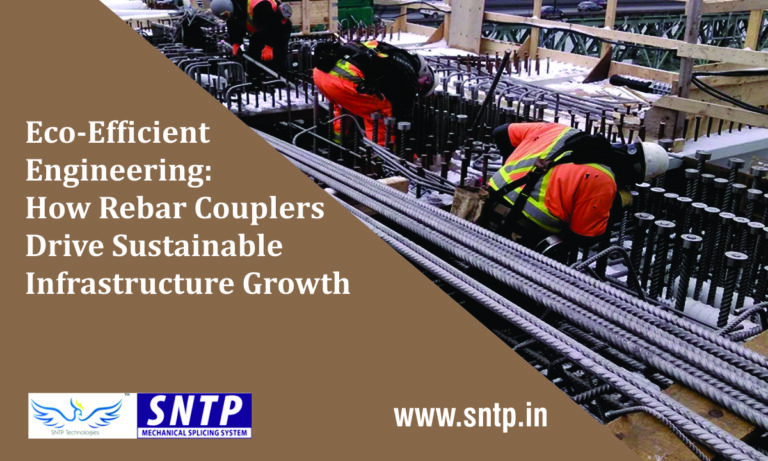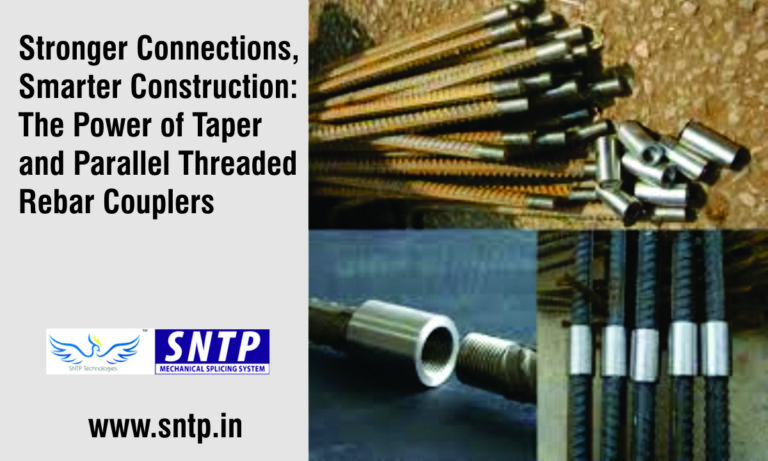+91 9953 65 9594

The Future of Construction: Why Rebar Couplers Are the Next Big Thing
India’s construction industry is undergoing a massive transformation. With mega projects like Smart Cities, bullet trains, metros, and expressways rising across the nation, the demand for faster, stronger, and more reliable construction methods has never been higher. Amid this evolution, one innovation is silently revolutionizing the way India builds — Rebar Couplers.
Once seen as a small mechanical connector, rebar couplers are now emerging as the backbone of modern concrete construction. They eliminate the limitations of traditional lap splicing, ensuring enhanced strength, precision, and efficiency. As the industry moves toward high-rise structures, prefabricated construction, and sustainability, rebar couplers are becoming an indispensable part of the future.
What Are Rebar Couplers?
Rebar couplers are mechanical connectors used to join two reinforcement bars (rebars) end-to-end, creating a continuous line of reinforcement without overlapping. Traditionally, bars were overlapped (spliced) to transfer stress, but this consumed extra steel, created congestion, and weakened the structure.
A rebar coupler provides a direct mechanical connection that transfers loads more efficiently. It is compact, easy to install, and ensures full tension and compression capacity — making it a superior alternative for today’s advanced construction requirements.
Why Traditional Lap Splicing Falls Short
Traditional lap splicing has been used for decades, but as construction has grown more complex, its drawbacks have become clearer:
- Increased Steel Wastage: Lap splicing requires overlapping lengths, which often wastes several meters of steel per connection.
- Rebar Congestion: Especially in columns and beams, overlapping bars create congestion, making it difficult to pour and vibrate concrete effectively.
- Limited Structural Integrity: Splicing relies on friction between bars, which can be unreliable in high-stress zones or during earthquakes.
- Time-Consuming Process: Handling and positioning long overlapping bars slows down reinforcement work.
Rebar couplers eliminate these issues completely — offering a cleaner, stronger, and faster solution.
Advantages That Make Rebar Couplers the Future
- Stronger and More Reliable Connections
Couplers provide a direct load path, enabling equal or greater strength compared to the parent rebar. This ensures reliability in both tension and compression, essential for modern structural demands. - Faster Construction
Since there’s no need for overlapping, site work becomes simpler and faster. Labor efficiency improves, which is vital for large-scale projects under tight deadlines. - Reduced Steel Consumption
By eliminating overlaps, couplers reduce steel usage by up to 20%, translating to significant cost savings and sustainable construction practices. - Ease of Use in Confined Spaces
High-rise buildings, bridges, and precast segments often have limited space for rebar placement. Couplers simplify reinforcement detailing and reduce congestion. - Enhanced Seismic Performance
India lies in several earthquake-prone zones. Couplers ensure consistent load transfer, improving seismic resistance — a major advantage for structures in seismic regions. - Perfect for Precast and Modular Construction
As India shifts towards prefabrication and modular building systems, couplers make it easy to connect precast elements quickly, safely, and with high precision.
The Indian Context: A Growing Market
In India, infrastructure development is accelerating like never before. The government’s focus on “Housing for All,” Smart Cities, metro expansions, and highway networks has boosted demand for faster and more efficient construction. Developers, contractors, and structural engineers are now realizing that traditional methods can’t keep pace with these ambitions.
Rebar couplers are increasingly being used in:
- Metro rail and bridge projects (Delhi Metro, Mumbai Metro, etc.)
- High-rise residential and commercial towers
- Industrial structures
- Precast factories and modular housing projects
Indian standards like IS 16172:2014 and international codes such as BS 8110, ACI 318, and Eurocode 2 have already recognized mechanical splicing systems, ensuring safety and quality compliance.
Leading Indian brands like SNTP are manufacturing ISI-certified rebar couplers that meet these standards, providing reliable solutions customized for local conditions and project requirements.
Economic and Environmental Impact
The shift towards rebar couplers isn’t just a technical upgrade — it’s an economic and environmental win.
- Cost Efficiency: Reduced steel consumption and faster project turnaround directly boost profit margins.
- Lower Carbon Footprint: Steel production is one of the largest CO₂ emitters. By minimizing steel waste, couplers contribute to sustainability goals.
- Labor Optimization: Simplified installation reduces dependence on highly skilled bar benders and manual splicing work.
- Material Reusability: In some modular setups, couplers enable easy dismantling and reuse, aligning with circular construction principles.
In a time when India is committed to sustainable development and green building certifications (like GRIHA and IGBC), rebar couplers play a key supporting role.
Innovation and Future Trends
The evolution of rebar couplers doesn’t stop here. Manufacturers like SNTP are integrating innovation and precision engineering to develop high-performance couplers suited for Indian site conditions.
Future trends include:
- Threaded and Torque-Controlled Couplers for better load control.
- Corrosion-Resistant Coatings for coastal and humid environments.
- Automation and Prefabrication Compatibility, enabling robotic assembly in factory setups.
- Smart Testing and Quality Monitoring, ensuring 100% compliance before installation.
As technologies like Building Information Modeling (BIM), AI-driven project management, and 3D concrete printing advance, couplers will seamlessly integrate into digital construction workflows.
Conclusion: Building the Future, One Connection at a Time
Rebar couplers may appear small, but their impact on India’s construction industry is monumental. They represent the shift from traditional to modern, from wasteful to efficient, and from conventional to sustainable building practices.
With the Indian construction market expected to reach USD 1.4 trillion by 2030, adopting rebar couplers is no longer optional — it’s essential. Builders and contractors who embrace this innovation today will gain a clear competitive advantage tomorrow.
In the race toward smarter, faster, and greener construction, rebar couplers are the next big thing — silently powering the future of India’s infrastructure, one connection at a time.
© Copyright 2017.SNTP All Rights Reserved.
Design & Developed By Star Web Maker







